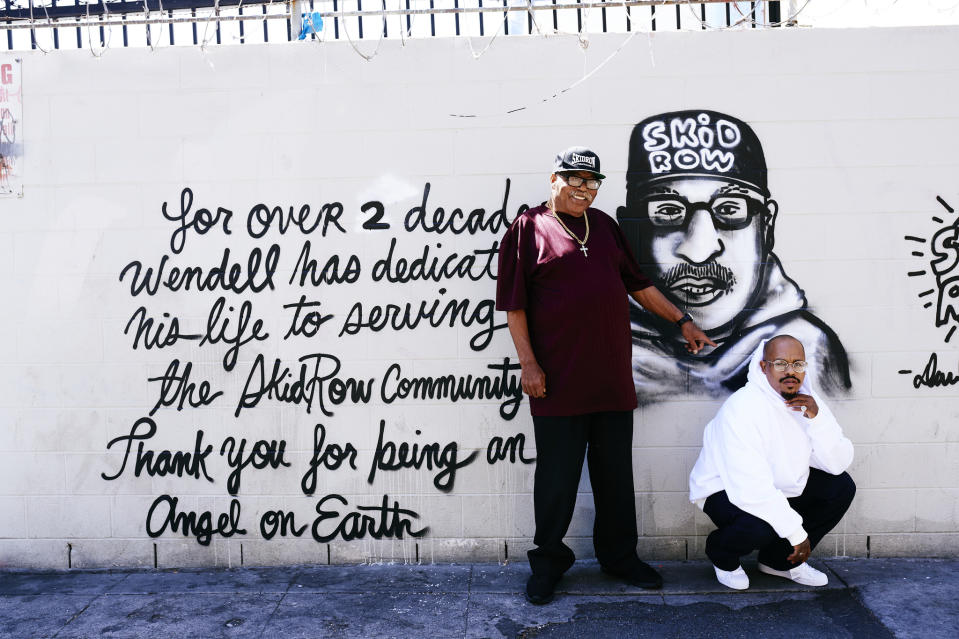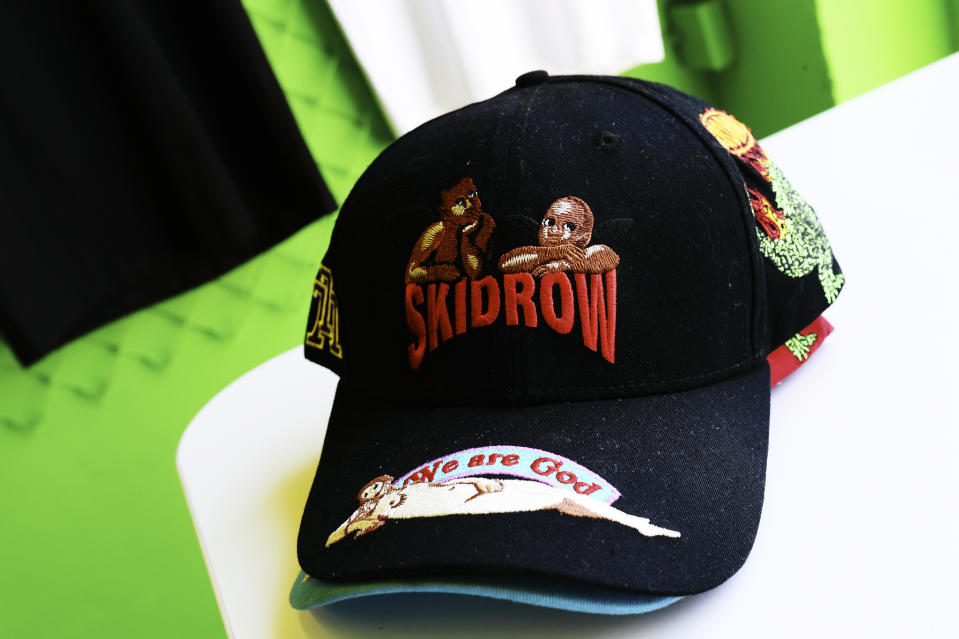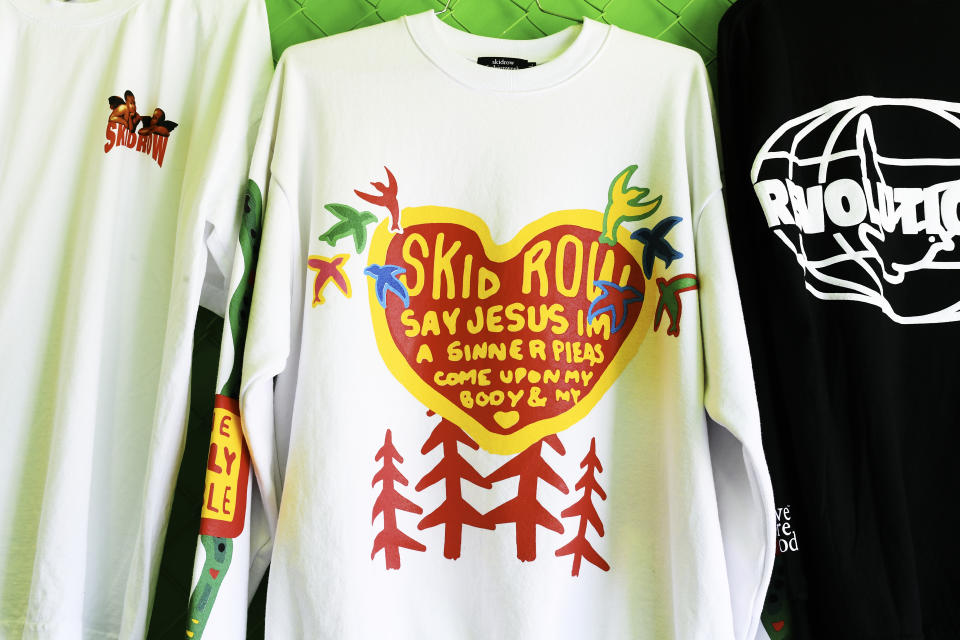SkidRow Fashion Week Brand Aims to Tackle Homelessness in L.A. One Shirt at a Time

SkidRow Fashion Week is the fledgling streetwear brand aiming to help people transition out of homelessness in L.A., one T-shirt at a time.
The brainchild of Warner Music recording artist and cultural provocateur David Sabastian and skate industry vet Rich Marshall, SkidRow Fashion Week operates out of a corner print shop on Main Street in downtown Los Angeles. On any given day, a handful of freelance workers who live in nearby Skid Row earn money screen printing socks, T-shirts and hoodies with motivational slogans, crosses, Black cherubs and other graphics that bring to mind Yeezy, Fiorucci and Sister Corita Kent.
More from WWD
“The last thing the world needs is another song or T-shirt, so I figured if we started a fashion business, it had to be around impact,” said Sabastian of the start-up, which has ambitions to follow in the mold of successful L.A. social enterprise Homeboy Industries. “When I grew up in Torrance, there was a large homeless community under the 110 freeway near my house and I developed friendships there,” he added. “But too often, the homeless are forgotten. They have been saying they are cleaning up Skid Row for years, but the larger problem is rehabilitation and opportunity. That’s the ethos of this, you buy more clothes, you help more people because the clothes are manufactured by people in the community.”
The brand has worked with downtown L.A. neighborhood council member Wendell Blassingame, known as “the Saint of Skid Row,” to recruit about 28 workers over time, people like Sandra and Red, who were on hand during a recent visit, and whose names and faces Sabastian painted on a mural outside the shop.

Michael Buckner/WWD
“People do a lot of talking…these guys walk the walk,” said longtime community activist Blassingame from his table where he sits daily at San Julian Park in Skid Row, a 50 block area in downtown L.A. that intersects with the Fashion District and the Arts District, and where many tony businesses and shops have opened in recent years. “We got to change the meaning of Skid Row,” he added, acknowledging the weight of using the name on a clothing brand.
L.A. has an estimated homeless population of 60,000, with a history that began in the late 19th century when unemployed men settled in the area around a Southern Pacific Railroad passenger terminal that is now known as Skid Row. During the pandemic, the city saw a surge in encampments on the Venice Boardwalk and elsewhere, and conflicting public opinion over what to do. The new California state budget has allotted a record $4.8 billion to spend on the cause in the next two years.

Michael Buckner/WWD
“When he said he wanted to do something on Skid Row, I thought of Patagonia, Toms shoes, Kind bars…The future of corporations is social impact,” said Marshall, who met Sabastian at the MAGIC trade show in Las Vegas. They launched the brand in 2019 with $2000, starting off selling at the Melrose Trading Post flea market. In addition to providing temporary employment, they regularly distribute donations of shirts, socks, food and other supplies to Skid Row.
A rapper who lists his fashion experience working with Steve Aoki, Drake and FourTwoFour, Sabastian is known for staging provocative stunts, including a Gucci bonfire he organized in 2019 to protest the brand’s controversial turtleneck sweater that resembled blackface. (After public outcry, Gucci apologized, removed it from shelves and increased its diversity and inclusion efforts.) To promote SkidRow Fashion Week, he’s staging a guerrilla pop-up shop in front of Dover Street Market in the Arts District on July 31, which the retailer is aware of and is not stopping. The brand is also available online.
The next step is finding funding to scale, and formalizing the give-back aspect of the business, which they aim to be 10 percent.
“We’ve proven we can sell things around the world that are made and shipped by the Skid Row community,” said Marshall, who has received orders from as far away as Croatia. “Once this explodes, we have big picture ideas of buying land and creating opportunities for transformational learning,” said Sabastian. “I also want to do a fashion show.”
Not just a stunt but a full-circle moment.

Michael Buckner for WWD
Best of WWD
Sign up for WWD's Newsletter. For the latest news, follow us on Twitter, Facebook, and Instagram.

